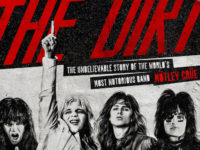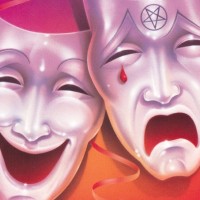Motley Crue’s self-titled 1994 record once memorably made a list of the “10 Worst Heavy Metal Albums of All Time,” and I was a little taken aback. Granted, it was not a very well-constructed list, containing a few albums that weren’t metal at all, and a few more that weren’t even the worst by that artist – much less the worst of all time. But still …
The nearly 20 years between Crue’s best-selling Dr. Feelgood and their 2008 comeback album Saints of Los Angeles, were not always kind to the band. There was 1997’s absolutely awful reunion record Generation Swine, which featured a mish-mash of alternative-tinged attempts to be relevant, songwriter Nikki Sixx working out his punk fetish, songs that were written for John Corabi and not suited to Vince Neil’s nasally vocals, and misguided tributes to children and wives.
If you’re looking for Crue’s worst moment, that was it. Generation Swine was about as big a mess as the hard-rock world has ever seen and about as far from what you want in a Motley Crue record as you can get. After that, drummer Tommy Lee parted ways with the band, resulting in 2000’s New Tattoo, which seemed almost a response to the backlash of Generation Swine. It ran away from the modern sounds of that album, dipping too far back into their 1980s repertoire and coming off a little tired and generic. There were also more compilation albums during that span than you can count, before they finally got it on track and got back to doing what they do in 2008.
The bright spot from those years, though, was actually Motley Crue’s self-titled 1994 record with John Corabi. Not only is it not their worst record, to me, it’s among their best. Corabi, former vocalist of the Scream, brought a second guitar and a gruff, ragged edge to the vocals. It was a stark contrast to Neil’s high-pitched tones, and though I may earn the ire of many Motley Crue fans – one who lives with me, included – by saying this, Vince Neil’s vocals can’t touch what’s on this record. Corabi’s voice also brought a rougher, heavier edge to the music.
Many Motley Crue fans dislike the album because of Neil’s absence, but no one can deny that it’s the band’s heaviest and most mature record – mature, of course, being a relative term where Motley Crue is involved. Lyrically, the songs are still littered with drug references and party themes, but musically, there’s a definite growth.
Nowhere is the shift more pronounced than on my personal favorite track, “Welcome to the Numb.” It opens with a slide riff from Mick Mars with heavy effects, then morphs into a good old-fashioned hard rocker. Mars continues to rip it up on the slide, and the song has a great chorus hook. Corabi also gets a chance to show off his harmonica skills. There are some really nice Aerosmith blues-rock influences on the track, and the album in general.
That comes out again, along with some ’70s glam rock influence on “Poison Apples,” which name-drops Mott the Hoople and includes references to several other bands, including Aerosmith. The dark groove of “Til Death Do Us Part,” which was originally the name of the album, is a throwback to the more dramatic hard rock of the 1970s/early ’80s with small traces of Whitesnake and Led Zeppelin.
There were, of course, several ballads, but for the most part they weren’t the typical three-chord 1980s love songs. “Misunderstood,” one of the singles from the record, was closer in structure to something from Soundgarden’s Superunknown, featuring a chorus with sitars and mandolins – instruments you don’t expect to find on a Motley Crue record. The track also kicks into gear about halfway through with a swaggering hard rock section. Glenn Hughes has a guest spot on the song, but is woefully underused, providing only backing vocals and getting largely lost.
“Loveshine” was a love song, but had a heavy Zeppelin vibe to it. The final track, “Driftaway,” is the most typical and least memorable. On the other end, the heaviest song on the record is “Smoke the Sky,” which features a chunky, driving riff from Mars and some impressive screeches from Corabi. There’s also a nice stomping heavy breakdown in the middle of the song.
Mick Mars’ playing was potent throughout, as he found his groove on tunes like “Hammered” and “Uncle Jack.” There are great grooves all over Motley Crue. Corabi’s vocal range brings a depth to that aspect that the band had never had before, and even Lee and Sixx turn in some of their best work.
Whether fans cared for him or not, John Corabi seemed to raise the game of all of the band members, and from a purely musical standpoint, this might be Motley Crue’s most impressive effort. As much as I like it, even I’m guilty of overlooking the album – and every time I return to it, I’m stunned by just how good it is. It might not sound exactly like what you expect from Motley Crue, but it’s one hell of a rock ’n’ roll record.
- How Black Sabbath’s Self-Titled Debut Invented a New Genre of Music - February 5, 2025
- Alestorm, Ratt, Zeal & Ardor + Others: Fred Phillips’ Best of 2024 Metal and Hard Rock Songs - January 26, 2025
- Cody Jinks, Blackberry Smoke + Others: Fred Phillips’ Best of 2024 Country and Southern Rock - January 20, 2025




